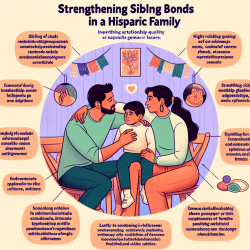As practitioners dedicated to improving the lives of children with cerebral palsy (CP), it's crucial to stay updated with evidence-based practices. One such promising intervention is Partial Body Weight-Supported Treadmill Training (PBWSTT). According to a recent systematic review and meta-analysis titled Effectiveness of Partial Body Weight-Supported Treadmill Training on Various Outcomes in Different Contexts among Children and Adolescents with Cerebral Palsy: A Systematic Review and Meta-Analysis, PBWSTT has shown significant benefits in various settings, including rehabilitation centers, homes, and schools.
Here’s how you can implement these findings in your practice to create better outcomes for children with CP:
Why PBWSTT?
PBWSTT involves using a supportive device to reduce the amount of weight a child bears while walking on a treadmill. This method has been found to improve:
- Walking speed
- Gross motor function
- Balance
- Endurance
Key Findings from the Research
The systematic review included 10 studies with 255 participants, aged 3 to 18 years, with CP. Here are some key takeaways:
- PBWSTT for 4–12 weeks significantly improved outcomes in both rehabilitation and home/school settings.
- In a rehabilitation context, PBWSTT was particularly effective in enhancing walking speed and gross motor skills.
- At-home and school settings also saw significant improvements, although the results varied based on the specifics of the intervention.
How to Implement PBWSTT in Your Practice
Based on the findings, here are some practical steps you can take:
- Start Small: Begin with shorter sessions (20-30 minutes) and gradually increase the duration as the child becomes more comfortable.
- Consistency is Key: Aim for regular sessions, ideally 2-3 times per week, over a period of 4-12 weeks.
- Tailor to Individual Needs: Adjust the level of body weight support and treadmill speed based on each child’s capabilities and progress.
- Collaborate with Other Therapists: Work closely with physiotherapists, occupational therapists, and speech therapists to provide a holistic approach to the child’s rehabilitation.
Encouraging Further Research
While the current research is promising, there is still a need for more high-quality, randomized trials to further validate the long-term benefits of PBWSTT. As practitioners, you can contribute to this growing body of evidence by documenting your observations and sharing your findings with the broader community.
To read the original research paper, please follow this link: Effectiveness of Partial Body Weight-Supported Treadmill Training on Various Outcomes in Different Contexts among Children and Adolescents with Cerebral Palsy: A Systematic Review and Meta-Analysis.










